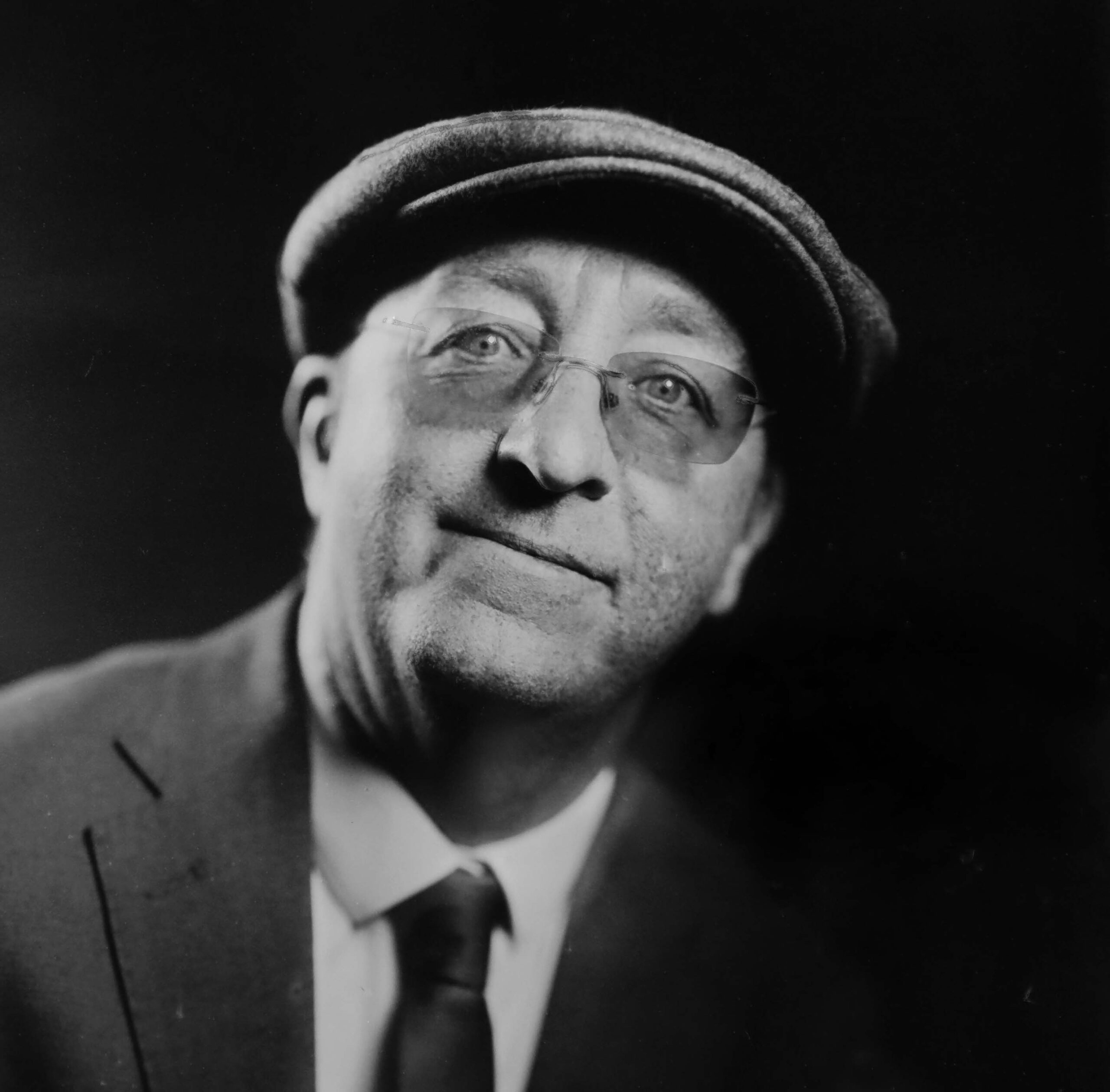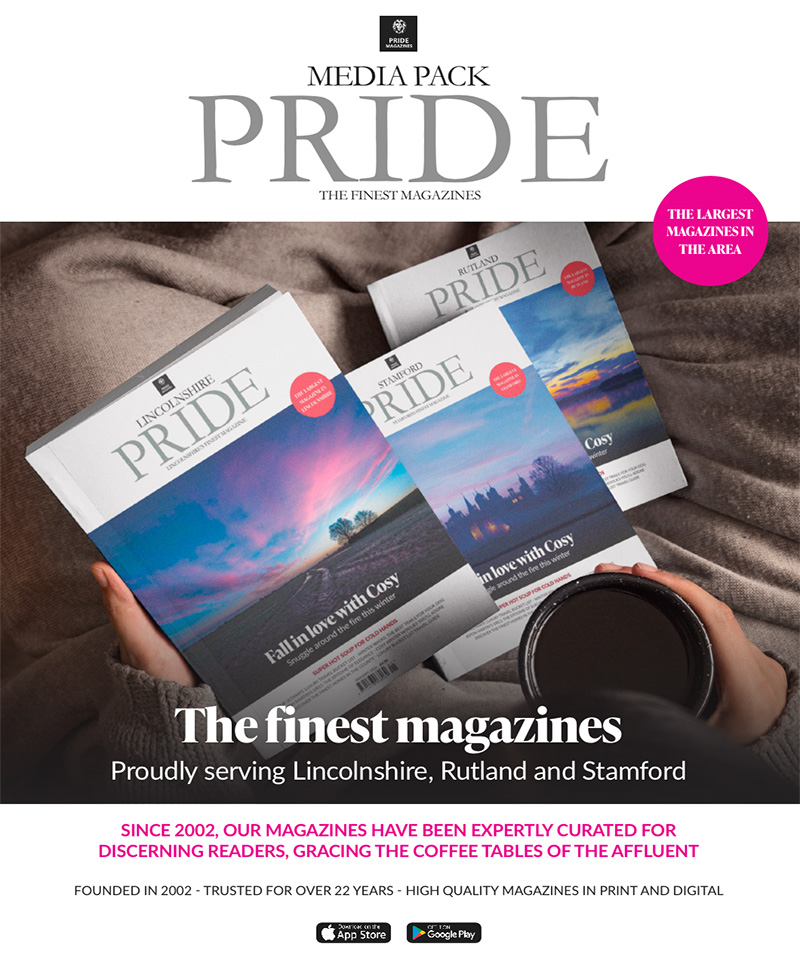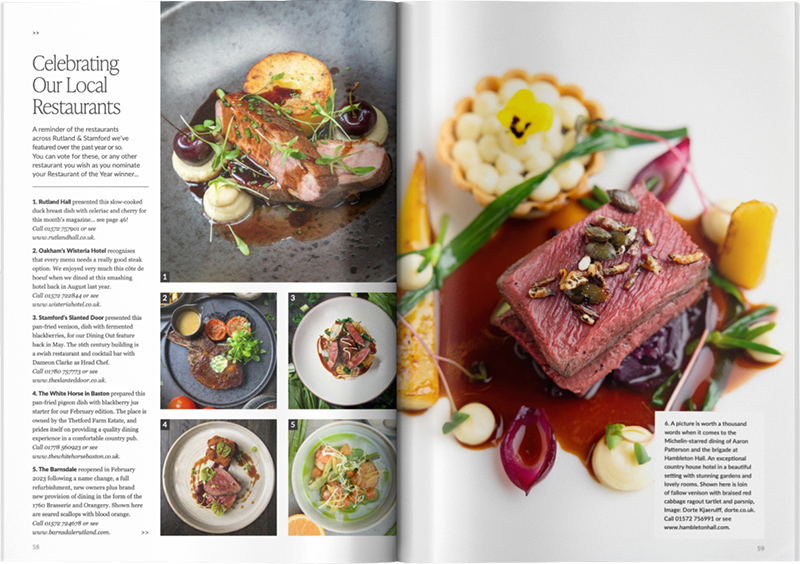
Tintype Photography
This month we’re going back to the early days of vintage photography with James Millar, founder of The Tintype Studio near Saxby. James specialises in the art and alchemy of tintype photography – also known as wet plate photography – for his authentic portraiture
Booof! At photographer James Millar’s command, the studio lights fire and a snap of eye-fuzzying light illuminates the whole room. This isn’t a typical photographic studio though, with all the latest fancy digital camera tech. James specialises in tintype photography, a deliciously analogue 19th century technique with a unique aesthetic that’s evocative and beautiful.
It’s tricky to say how many people in Britain still retain the ability to make a tintype photograph, but James reckons there are perhaps five to 10 people at the most who can offer such images professionally, such is the niche nature of the process.
Even film photographers are rare these days, let alone those working not with modern film, but with such venerable techniques. Here’s a picture – pun intended – of the way photography is more commonly conducted in 2025. The photo-sharing website Flickr analysed across a whole year how images uploaded to their website were taken. Nearly 151m were taken on an iPhone. 133m were taken on a Canon camera; 82m on a Nikon; 43m on a Sony camera.
As the most popular brand in the world, Canon sold 3.34m cameras in 2024 compared to the sale of 231m Apple iPhones in the same year. It’s also reasonable to surmise that uploading photos to a photo- sharing website is more common for enthusiastic photographers with a ‘proper’ camera and that most people with a smartphone are capturing pictures for personal use, not for the purposes of uploading them to any site beyond their social network accounts. In Apple’s latest iPhone promotion for its forthcoming 17th generation model, though, the company said that 8bn ‘selfies’ are taken on iPhones each year.
In other words, by quite some margin, the iPhone is the world’s most popular camera, and in favourable lighting conditions it isn’t bad. But the power in our pocket to capture images has led to complacency about their value. Few of us do anything but leave our images to languish on a mobile device or in a folder, or to be seen briefly on social media before being buried by subsequent content.
As a former press photographer and newspaper editor himself, James acquiesces to the convenience, quality and sophistication of the modern cameras that professional photographers use, both for his editorial and portraiture purposes.
He studied Fine Art Photography at Nottingham Trent University, before landing a job as photographer for the Nottingham Post, and remembers shooting on film and how the newspaper had its own in-house darkroom.
It was a particularly fast turnaround to develop sports pictures such as football images, and then getting the negatives scanned in time for the paper’s twilight deadlines. Latterly, as a reporter, picture editor and newspaper editor, he witnessed the maturation of digital cameras.
Whilst modern kit is undoubtedly convenient, those who seek James out for tintype portrait commissions (he receives two or three enquiries a day) or for his tuition (one or two day courses, ad hoc, typically sought by professional photographers) recognise the unique vintage look of tintype images. James’s images are especially popular with couples celebrating their 10th wedding anniversaries, given that tin is the material associated with the milestone.
Programmes like Bridgerton, Downton Abbey, and Peaky Blinders, and films like The Great Gatsby have all made a ‘vaguely vintage’ aesthetic fashionable, even if those examples span a rather broader period from the Regency era to the roaring 20s, by which time celluloid was ascendant.
Too few of us display proper images in frames or albums these days, and too few of us value the skills of a professional photographer. That wasn’t always the case, though, and this month we’re returning to the dark ages of the dark room, before megapixels begat moustachioed Victorian men producing calotypes and collodions.
We’re in the rural photographic studio of James in Saxby near Grantham, and it’s a pretty fun place to be. Unashamedly vintage, builders’ tea is served in a white and blue enamel mug, Bowie is pre-empting our contemplation of old versus new photographic techniques by singing about ‘Ch-ch-changes’ through an old hi-fi, and the building itself is also an old livestock shed repurposed with a dark room and a changing room for portraiture clients.
Forget about developing film on a roll and printing onto photographic paper. That’s much too modern. We’re here to create tintype images, rendered in silver.
Anyway, we’ve about three minutes, whilst the silver nitrate is reacting with the collodion (cellulose, suspended in ether and alcohol) and creating our emulsion. That’s just enough time for James to explain…
“Experiments with capturing images had been conducted since the early 1700s, when Johanne Heinrich Schulze used a light- sensitive slurry to capture an image. Thomas Wedgewood was still experimenting with the same process around a century later.”
“In 1826 Nicéphore Niépce was a little more successful, although the process was impractically slow, until his colleague Louis Daguerre developed the daguerreotype process. Rival Henry Fox Talbot also demonstrated his similar calotype process around the same time.”
“From these early techniques the collodion process – as it became known – was refined and widely used until the early 20th century when film (first sold by George Eastman in 1895) and celluloid emulsions became more common, with colour then emerging from around the mid-20th-century.”
Tintypes democratised the process of capturing an image, allowing the middle classes and eventually the working classes to capture their lives and their likenesses beyond portraiture, which had previously been the preserve of the wealthy.
Around the mid-19th-century, those hoping to sit for a portrait would find themselves in a studio producing tintype portraiture, of the type that I was about to sit for. Imagine, an actual image of you: not just a painting or a drawing, but your actual reflection, permanently committed to a metal plate. Back then it was magical and exciting, not something that we just take for granted today.
Ah… three minutes is up. Already, James has taken the protective film off a sheet of 8in x 10in aluminium, then coated it with collodion and placed it into a lightproof holder with silver nitrate, at which point it will become light-sensitive.
The light-sensitive plate is more sensitive to the ultraviolet than infrared spectrum of light though, so, James can still get away with using a red light in the dark room to make it a little easier to see. He loads the plate into a light-proof cassette in between front and back dark slides. That whole plate can now be loaded into his camera.
James is using a Gandolfi 10×8 camera, which is really a reproduction of earlier cameras from the mid-19th-century. It was actually made in the 1980s. Its lens has a focal length of 350mm which to most photographers would mean a long zoom, but it’s actually a focal length approximating 50mm.
James also has a 150-year-old Kodak with lens made by Bausch & Lomb (the company today makes contact lenses), and he uses a J Lizars camera for 5×7 plates.
I sat in front of the large-format camera to pose for an image and, having seen the process, we then swapped places and captured an image of James, developing the image in his darkroom under his instruction.
Tintype photography has a style that can be (poorly) emulated with a digital camera and a copy of Photoshop, but employing such a modern approach would leave the image lacking a certain inchoate quality. It is, James reckons, comparable to streaming music digitally versus listening on vinyl.
“You hear people talking about the pops and crackles of vinyl, the uniqueness and the tangible warmth which give it such charm, it’s perfectly imperfect.” he says.
“Tintype doesn’t just result in a black and white image, it has a real contrast with deep beautiful shadows, and a silvery tone that’s really distinctive. What’s more, you’ll always get some imperfections or anomalies, so each image really is unique.”
In proud possession of my own portrait, it was time for the portrait subject to become the photographer. Having prepared my plate, I sat James in position and ensured he was in focus using a magnifying loupe and a brass dial to fine tune the position of the camera’s bellows.
The image appears upside down and back to front – which the pentaprism of modern cameras corrects. As for a shutter release button? Well, there’s no shutter, so there’s no shutter release. Instead, James uses… a bowler hat.
Not only is that rather quaint and in keeping with the look and feel of the studio, it’s a better option than using removing a lens cap, which is a little clumsier.
Instead, the black felt inside the bowler hat keeps light out, and you can lift it up before lifting it away from the lens with a nice quick movement. Then, it’s a case of manually firing the flash using James’s very powerful and very bright 3kW strobes.
The flash is modern concession, but a sensible one, because the intense blast of light is so powerful that ambient light becomes irrelevant and the resulting image is solely derived from the brief but powerful duration of the flash, not the duration to which ambient light is allowed to enter the lens.
Without the flash, you’d need a subject to sit perfectly still and you’d rely solely on ambient light for your exposure, which would take anywhere from five to 15 seconds. That’s why the subjects of vintage portraits never smile – instead they had to sit perfectly still and stony-faced.
After reinserting the front plate, it was back into the darkroom to develop the image. The plate is firstly developed using ferrous sulphate, with a solution of alcohol and white vinegar as a restrainer, it is then placed in a fixing bath of sodium thiosulphate which is the magic part as the image transforms from a milky negative to a black and white picture. After a thorough rinsing, and when they’re dry, it’s also common to varnish the tintype with shellac for extra protection from fading, and to add a nice gloss – a preference for such a finish was continued when the film era emerged; you might remember being asked by the photolab if you wanted your photos ‘matte or glossy?’.
The images certainly last, too. Some of the early tintypes endure even 170 years later, which, James says, gives rise to the hope that a century and a half from now his images will still be in a frame or on the wall. That’ll certainly confuse a future historian trying to accurately date an image.
As the tintype image was in the rinsing tray, there were a few minutes to admire the various commissions and portraits that James has produced in the studio.
They’re all subtly different but all really evocative, images from when photography was more about patience and less about casually taking snapshots for Instagram.
“The people I work with are seeking the look, the aesthetic, and they don’t just ‘accept’ that it’s a less consistent process than modern photography; they actively seek it out specifically for that reason.”
“I’m thrilled that there’s still demand for the look and the skill,” he says. “It’s still slightly magical to me. Sure, with modern photo editing software you can emulate the look to a certain degree, but only artificially and only on a screen, the real joy is holding a real tintype in your hand, seeing the clarity and knowing you made it from scratch.
“A proper tintype will always have something extra, a quality you can’t necessarily identify or put into words, but just a look and a feel that’s absolutely unique and still very beautiful. In that respect, they’re not just vintage; they’re timeless.”
James established The Tintype Studio in 2020, and offers vintage portraiture from £400, plus one or two days workshops by arrangement £POA. See www.thetintypestudio.co.uk or call 07703 987532 for details.
See our full feature in the November edition of Rutland Pride at https://www.pridemagazines.co.uk/rutland/view-magazines?magazine=November-2025






